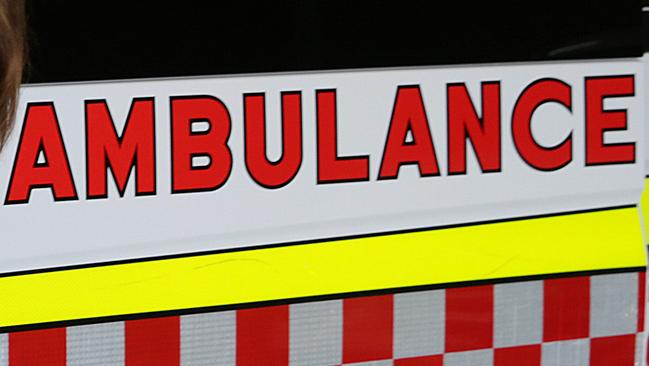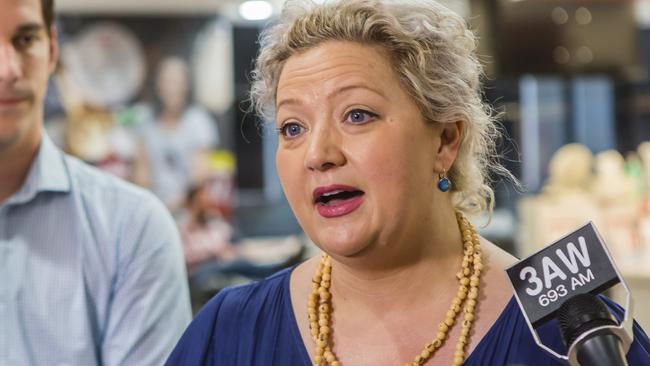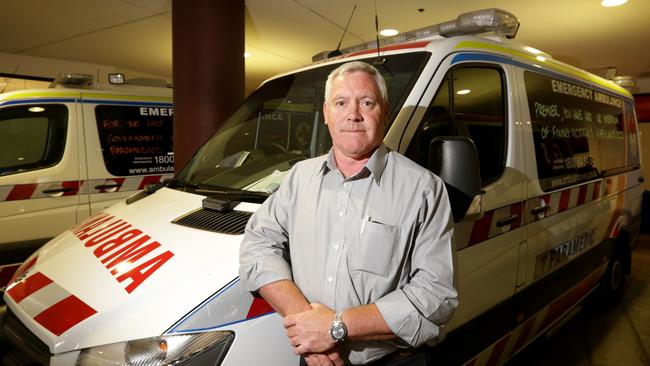Ambulance Victoria calls for citizen first-responders to help respond to critical triple-0 medical emergencies
ORDINARY Victorians will be asked to respond to critical triple-0 medical emergencies as part of a new plan by Ambulance Victoria.

VIC News
Don't miss out on the headlines from VIC News. Followed categories will be added to My News.
ORDINARY Victorians will be asked to respond to critical triple-0 medical emergencies.
Ambulance Victoria is developing a smart phone app that will see first aid-trained community members notified when a triple-0 call is made for a person having a heart attack nearby.
They will then be dispatched to the call to provide immediate lifesaving treatment until paramedics arrive at the scene under a radical move being backed by the Andrews Government.
With every minute vital to a cardiac arrest patient’s chance of survival the “trusted responder” scheme is hoped to benefit thousands of critical Victorians, but it has also raised concerns about the abilities of citizens to deal with major medical emergencies and fears of a watering down of ambulance services.
Ambulance Victoria’s community services general manager Ian Patrick confirmed the move and said trusted responders could include off-duty paramedics, medical professionals, other emergency responders and members of the public with appropriate first aid training.
“The closest available ambulance would simultaneously be sent to these patients, and in some parts of the state the fire brigade would also be dispatched,” Mr Patrick said.
“These trusted responders would be given the location of the patient, and sent to provide CPR.
“We know early effective CPR greatly improves a cardiac arrest patient’s chance of survival.”
While the initial scheme is intended to cope only with cardiac arrest cases, documents seen by the Herald Sun outline future plans to expand the system to “an increased cohort of medical emergencies”.

The mobile phone-based system is designed to pinpoint the exact location of all registered responders so it can immediately detect those closest to an emergency and dispatch them to the scene.
Locations of the nearest available defibrillators will also be displayed on the responders’ phone so they can attempt to use it to restart their patient’s heart.
Health Minister Jill Hennessy said the process would not be used to lower response times for triple-0 calls, with bystander assistance not to be recorded in response times data.
“We know the evidence shows that survival outcomes for patients suffering from cardiac arrest are significantly higher when bystanders in the community act as first responders,” Ms Hennessy said.
“We support initiatives which help to locate skilled bystanders who can provide immediate CPR until a paramedic arrives.”
Ambulance Employee Association state secretary Steve McGhie welcomed moves encouraging members of the public to provide immediate emergency assistance, but warned there were strong risks in having untrained people acting as emergency responders.

As well as requiring the most stringent screening of skills to ensure responders provided safe first aid, Mr McGhie said the scheme could not be used as an excuse to water down the real ambulance service.
“We don’t want it in lieu of additional ambulance paramedic resources but, as an add on, there are some good things about it — but there are some risks with it,” Mr McGhie said.
“The principal of training people up to save others is not a bad thing, the issue of having a register of defibrillators is a good thing, and any people from the community attending to people before an ambulance arrives can only help.
“But, it shouldn’t be in lieu of additional ambulance resources and I think there are some dangers for those responders if they need to get in their car to get to the scene.
“We would be concerned about somebody racing down a street in their car to pick up an AED (defibrillator), then racing back to the scene to defibrialte someone.”


